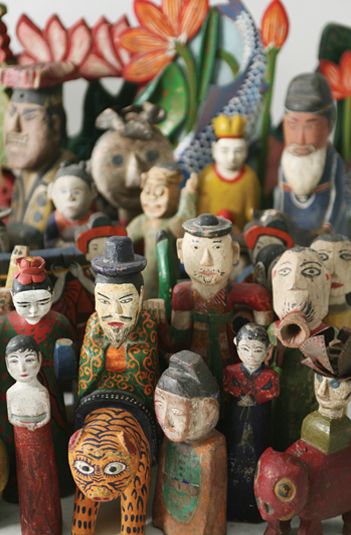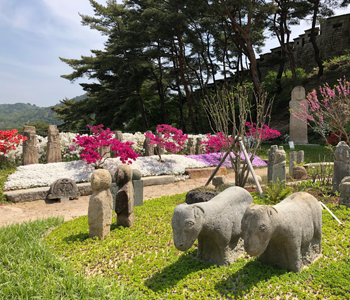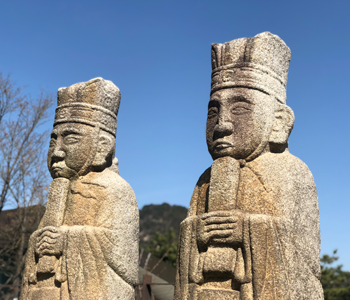Mok In(木人)
"Wooden Human figure"
Mok In are traditional wooden statues of humans or animals, and called as ‘Mok-woo’, ‘Mok-sang’, ‘Mook-woo-in’.
Extracted from the Korean Dictionary of National Institute of Korean Language
Mok In was used for religious ceremony, incantation and ritual, it has many kinds of functions and roles. There are lots of different types of Mok In such as Jang-Seung the guardian of a town, Mok-Yong The grave goods, Bul-Sang, Dong-ja-sang The wooden buddhism statues, Sin-Sang which was placed in a chapel for wishing luck and defeating ghosts, Sang-Yeo ornaments statues which lead the dead ones to the after life, Mok-An which was used for a wedding, Sot Dae was built at the entrance of a town and prevents bad ghosts. Turtle shaped Bit-jang was used for bolting doors. It shows us the Korean traditional beauty, and the Korean ancestors’ wisdom and idea of life and death.







